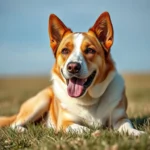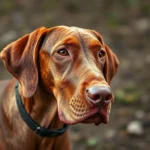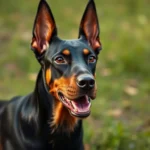
Introduction
Dog breeds play a significant role in the world of canine companionship, each with its own unique characteristics and historical background. Among the many breeds, the Rhodesian Ridgeback stands out due to its intriguing history and versatile nature. This article will explore what Rhodesian Ridgebacks were bred for, shedding light on their origins, characteristics, and roles both in the past and present. Understanding the history of a dog breed can be invaluable for potential owners, as it provides insight into their needs, behaviors, and suitability for various lifestyles.
Understanding Dog Breeds
Definition of Dog Breeds
A dog breed is a specific group of domesticated dogs that share particular physical traits, behaviors, and purposes. Breeds can vary dramatically in size, appearance, temperament, and skills. Common characteristics include coat types, color patterns, and general demeanor. Understanding these traits helps potential owners find a dog that aligns with their lifestyle and preferences.
Importance of Dog Breeds
Dog breeds significantly influence a dog’s behavior, health, and suitability for different living situations. For instance, some breeds are known for their loyalty and protective instincts, making them excellent companions or guard dogs. Others may excel in specific roles like service or therapy dogs. Recognizing these differences is crucial for anyone considering bringing a dog into their home.
The Rhodesian Ridgeback: An Overview
History of the Rhodesian Ridgeback
The Rhodesian Ridgeback originates from Southern Africa, where it was bred by indigenous Khoikhoi people. These early inhabitants utilized the dogs for hunting and protection. The breed’s history is a blend of indigenous dogs and European breeds, particularly the Bloodhound and the Great Dane. This combination resulted in a versatile dog capable of hunting large game, including lions.
Physical Characteristics
Rhodesian Ridgebacks are medium to large-sized dogs, typically standing between 24 to 27 inches at the shoulder and weighing between 70 to 85 pounds. They have a sleek, muscular build with a short, dense coat that is usually wheaten in color. One of their most distinctive features is the “ridge” of hair that runs along their back, which grows in the opposite direction to the rest of the coat, giving the breed its name.
Temperament and Behavior
The temperament of a Rhodesian Ridgeback is often described as affectionate, intelligent, and strong-willed. They are known for their loyalty and protective nature, making them excellent family pets. However, they also possess a high energy level and require ample exercise and mental stimulation to remain happy and well-behaved. Proper socialization is crucial, as it helps them develop into well-rounded companions.
What Were Rhodesian Ridgebacks Bred For?
Hunting Background
Rhodesian Ridgebacks were primarily bred as hunting dogs, renowned for their ability to track and corner large game. Their impressive speed and strength allowed them to assist hunters in tracking animals such as lions, antelope, and other large creatures across the African savanna. This breed’s tenacity and bravery in the face of danger made them invaluable to hunters in the region.
Versatility in Roles
While their primary role was as hunting dogs, Rhodesian Ridgebacks have shown remarkable versatility over the years. Beyond hunting, they have served as excellent guard dogs, family pets, and even in roles such as search and rescue. Their keen instincts and protective nature make them adept at guarding homes and properties. As family companions, they are known to bond closely with their human families and provide a sense of security.
Modern-Day Uses
In contemporary society, Rhodesian Ridgebacks continue to thrive as family companions and show dogs. Their striking appearance and unique ridge make them a popular choice for dog shows and competitions. Additionally, they are often involved in various canine sports and activities, such as agility and obedience trials. Their adaptability ensures they can fit well into diverse lifestyles, whether in a bustling city or a quiet country home.
Care and Training of Rhodesian Ridgebacks
Grooming Needs
Maintaining a Rhodesian Ridgeback is relatively straightforward due to their short coat. Regular brushing is recommended to minimize shedding and keep their coat healthy. Bathing should be done as needed, particularly if they get into muddy or dirty situations. Regular health checks, including ear cleaning and dental care, are essential to ensure overall well-being.
Training Requirements
Training a Rhodesian Ridgeback requires consistency and patience. Early socialization is crucial to help them develop into well-adjusted adults. Positive reinforcement methods, such as treats and praise, work best with this intelligent breed. They respond well to firm but gentle training, making it essential for owners to establish themselves as confident leaders.
Exercise and Activity Levels
Rhodesian Ridgebacks are energetic dogs that require significant daily exercise. Ideally, they should have at least an hour of vigorous activity each day, such as long walks, runs, or play sessions. Engaging them in activities like fetch or agility training can help satisfy their physical and mental needs. Without adequate exercise, they may become bored and exhibit undesirable behaviors.
Choosing the Right Dog Breed for You
Assessing Lifestyle Compatibility
When considering a dog, it’s vital to assess whether the breed aligns with your lifestyle. Rhodesian Ridgebacks are best suited for active individuals or families who can provide them with the exercise and attention they need. Those living in apartments may find it challenging to meet their exercise requirements, while larger homes with yards can be ideal.
Questions to Ask Before Getting a Dog
Before bringing a Rhodesian Ridgeback into your home, consider the following questions:
– Do you have enough time to dedicate to exercise and training?
– Are you prepared for the grooming and health care needs of the breed?
– How will a dog fit into your current family dynamics?
– Are you willing to invest in training and socialization?
Researching breed characteristics and understanding the responsibilities of dog ownership can help ensure a successful match.
Conclusion
The Rhodesian Ridgeback is a breed steeped in history and purpose, originally bred for hunting large game in Africa. Their loyal and affectionate nature makes them excellent family companions, while their versatility allows them to thrive in various roles. For potential owners, understanding the breed’s history, characteristics, and needs is crucial for responsible ownership. By appreciating the unique qualities of Rhodesian Ridgebacks, prospective owners can make informed decisions that lead to fulfilling relationships with their canine companions.
Understanding the breed is not just about recognizing its physical traits but also about appreciating its legacy and ensuring that the dog’s needs are met in a loving and supportive environment.








